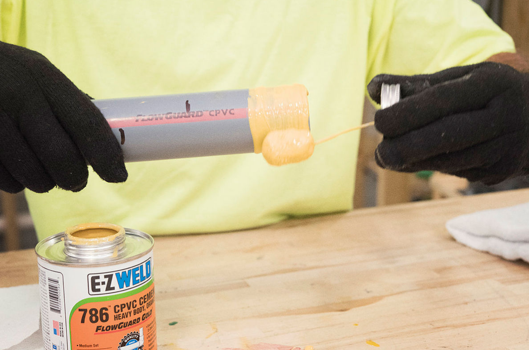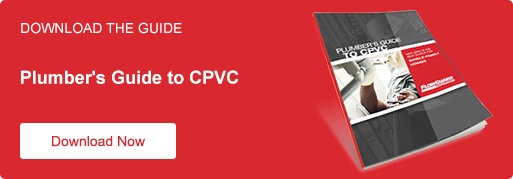Why Multi-Layer Composite Pipe Is Not the Plumber’s Choice
In recent years, interest in alternative materials for water distribution pipe has led to a lack of clarity on when it’s best to specify one material over another in plumbing applications. This post will offer some information comparing single-layer CPVC to multi-layer composite pipes.
First, single-layer CPVC pipes are backed up by 60 years of successful installations. They have numerous time-tested advantages in plumbing which can satisfy the needs of the majority of engineers, architects and contractors.
Flexible multi-layer PEX-aluminum composite pipes were introduced into the European market in the mid-1990s, initially for radiant floor heating applications. The main advantage of the composite, compared to standalone PEX, is that the aluminum layer acts as an oxygen barrier, a benefit in that specific application.
However, is this multi-layer material the ideal choice for plumbing installations too? Is it able to meet a number of critical requirements of a plumbing project, say, for instance, chlorine resistance and easy joining technology?
In comparing CPVC and multi-layer composite pipes, consider the service history of each, the water quality that each material can deliver in chlorinated service, fire resistance properties, and its ease of installation. These are just some of the many advantages.
Proven Track Record in Plumbing
- FlowGuard® CPVC pipe and fittings have proven reliable for more than 60 years in chlorinated potable water service.
- PEX pipe and fittings come from a family of polymers that have been used in plumbing applications for less than half that time, and are widely known for a history of poor reliability.
Chlorine Resistance
- In harsh chlorine disinfectant environments, CPVC is inherently resistant to even the most concentrated chlorine levels (as high as 3,000 ppm or greater) due to its molecular structure.
- Multi-layer composite pipe made of PEX is not recommended for use if the water to be transported is at chlorine levels greater than 5 ppm.
Fire Resistance
- CPVC will not propagate flame and requires nearly three times more oxygen than what is in the Earth’s atmosphere to continue burning. This means CPVC will not burn on its own, but rather will char and self-extinguish when the flame is removed. Smoke from CPVC is no more toxic than smoke from traditional building materials such as wood.
- Multi-layer PEX pipe will burn in everyday air just like a candle and will continue to burn on its own. Pipes will drip flaming plastic onto structures below, and in continuing to propagate the flames can be expected to worsen the overall property damages.
Ease of Installation
- FlowGuard CPVC can be installed quickly and easily using a solvent welding method and simple, inexpensive tools. Being molecularly bonded, the joint becomes the strongest part of the system – stronger than the pipe or fitting alone.
- Multi-layer composite pipe made of PEX must be installed using costly brass fittings and a special compression tool for crimping. The steps of the process generally take two to three times longer, and even when properly assembled, the joints have been prone to failures.

FlowGuard CPVC can be installed quickly and easily using a
solvent welding method and simple, inexpensive tools.
The unusual combination of inherent and performance properties of CPVC material like FlowGuard CPVC translate to undeniable benefits in most plumbing projects. In fact, FlowGuard CPVC has been the reliable plumbing material choice in KSA for the last 30 years. It is especially suitable for high-rise constructions, where the strength of a rigid material is needed for vertical risers and the delivery of safe drinking water is paramount.
Contractors and building owners put their reputations on the line with every structure they build.
Having confidence that a piping material will perform as expected is one important part of protecting those reputations and the well-being of the buildings’ eventual occupants.
Want to know more about the many advantages of FlowGuard CPVC? Our team of piping systems consultants is ready to help.
.png)
-1.png)

